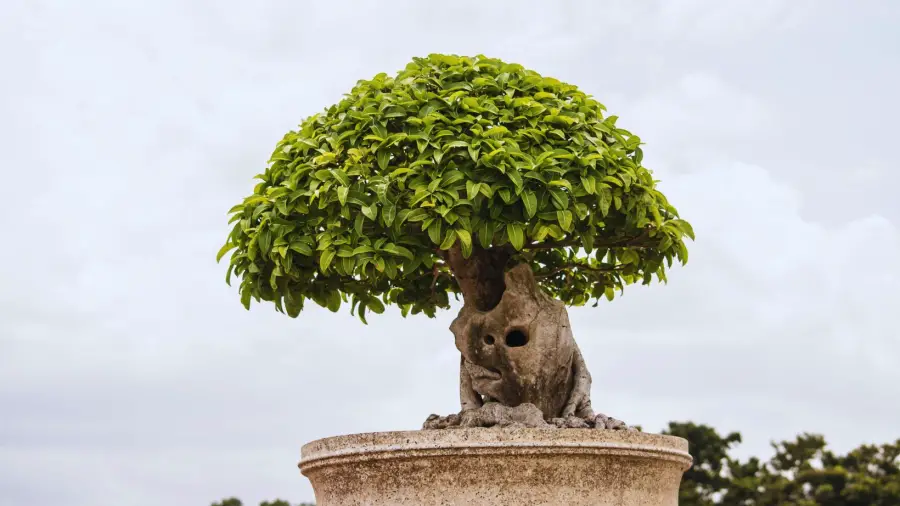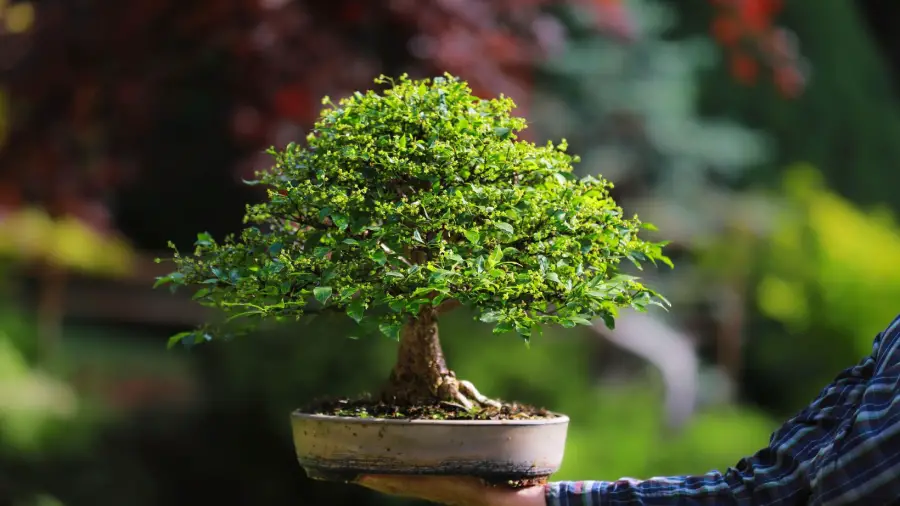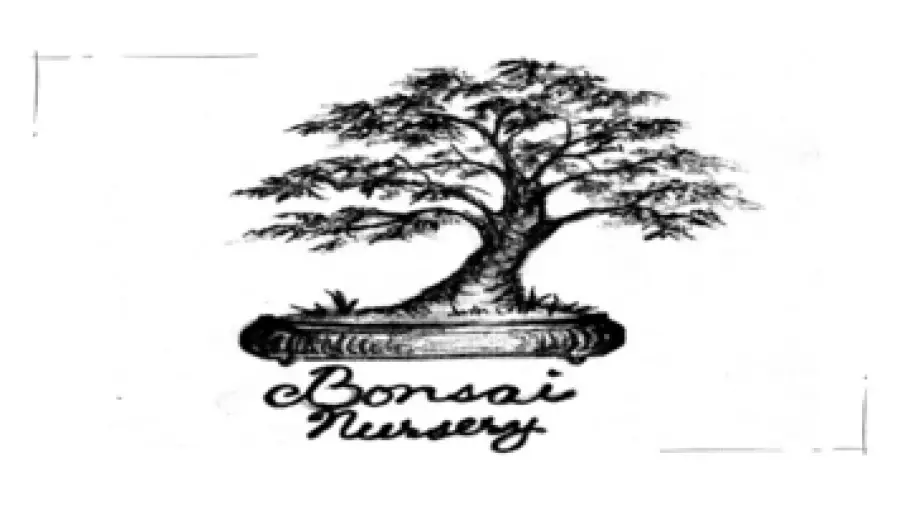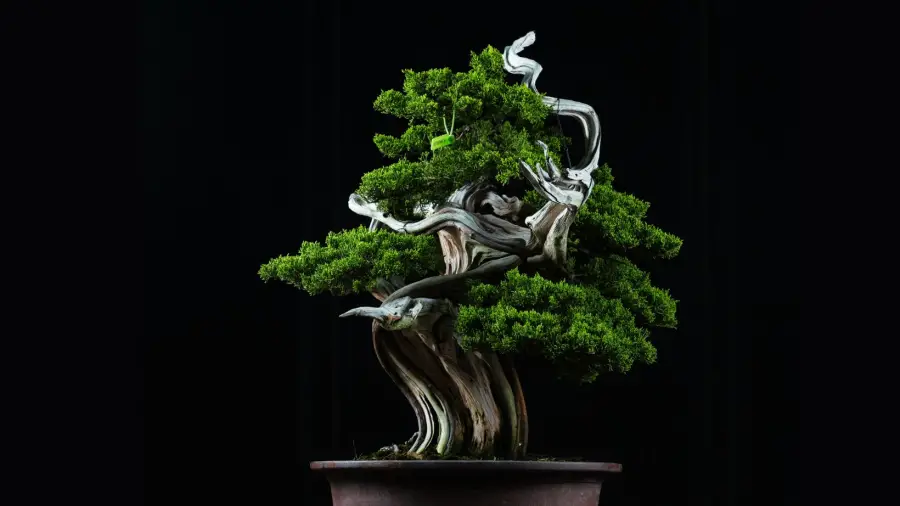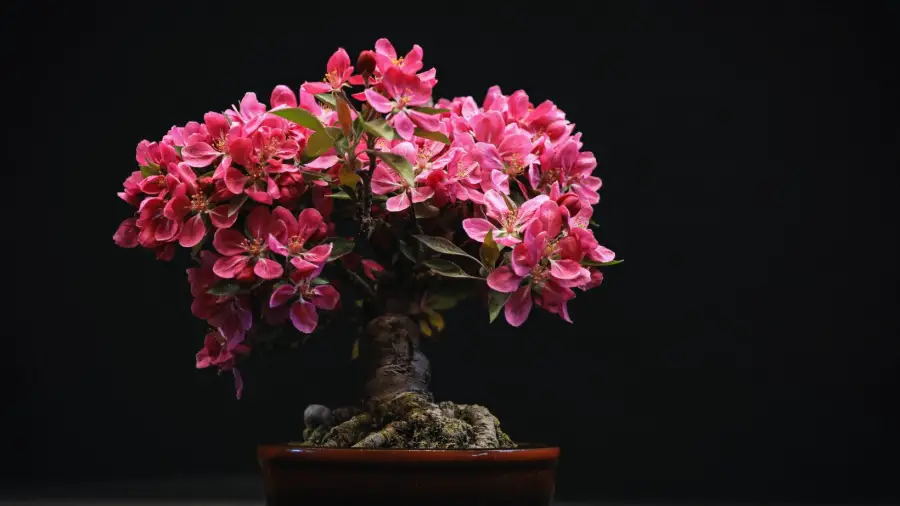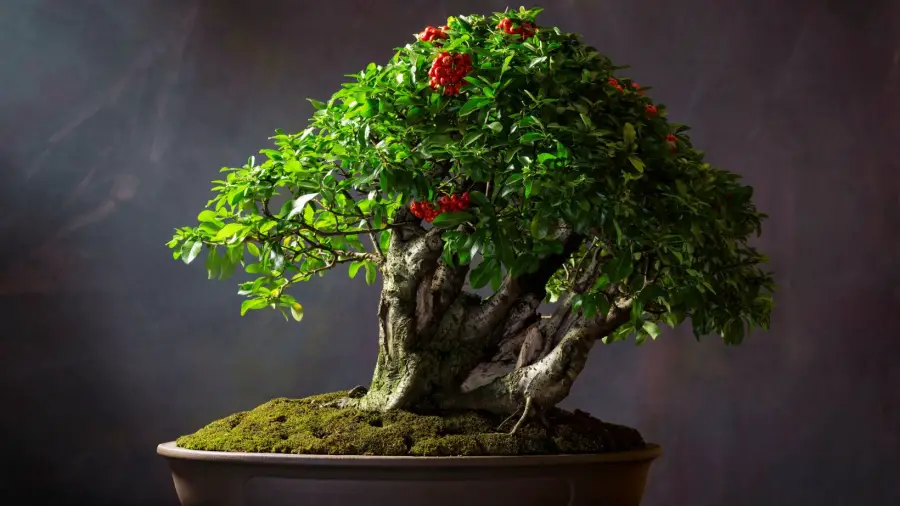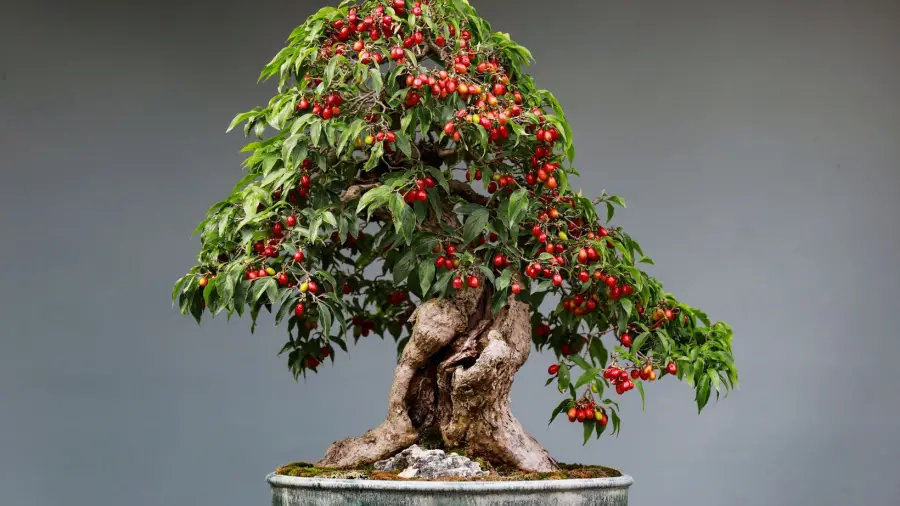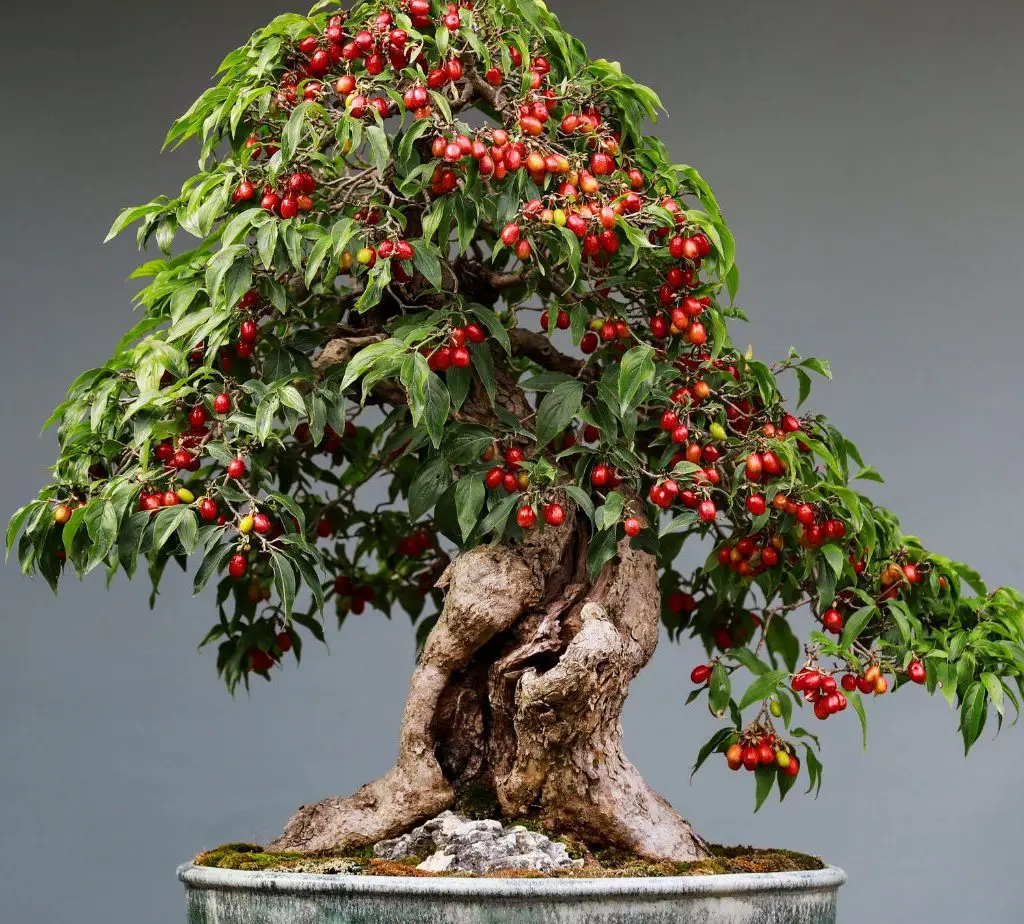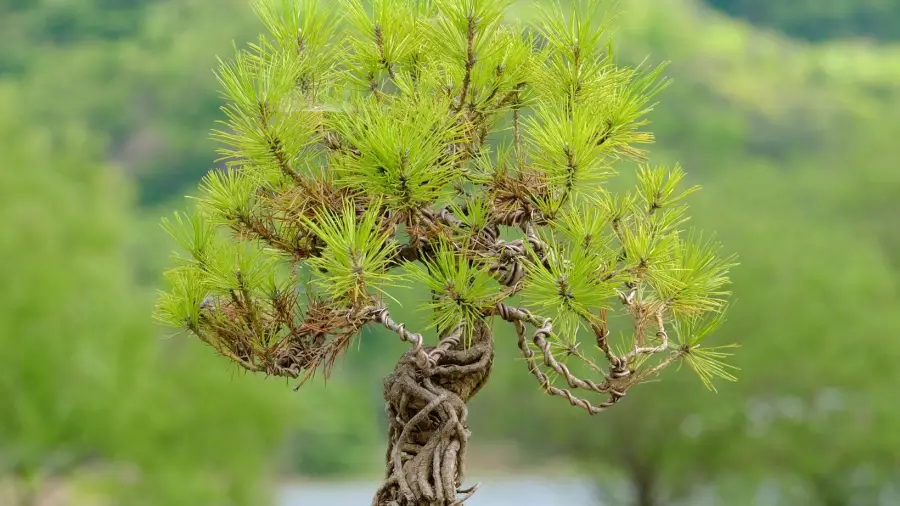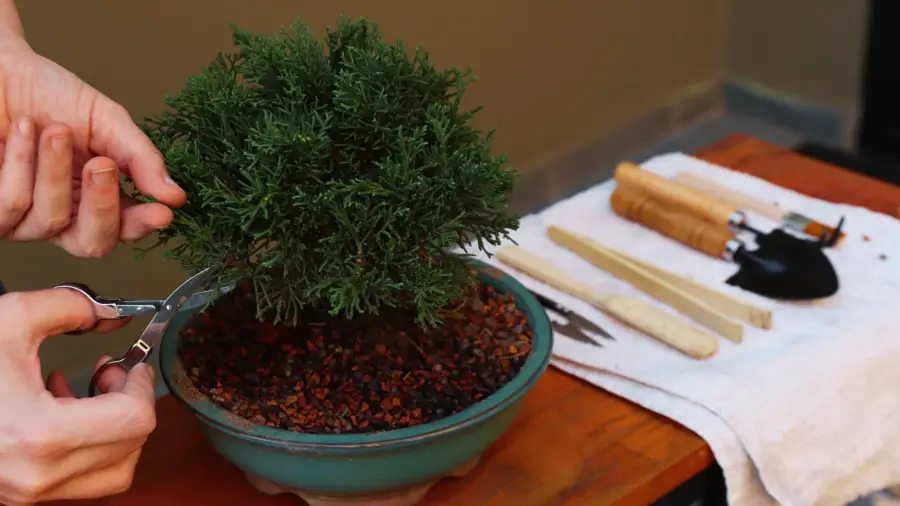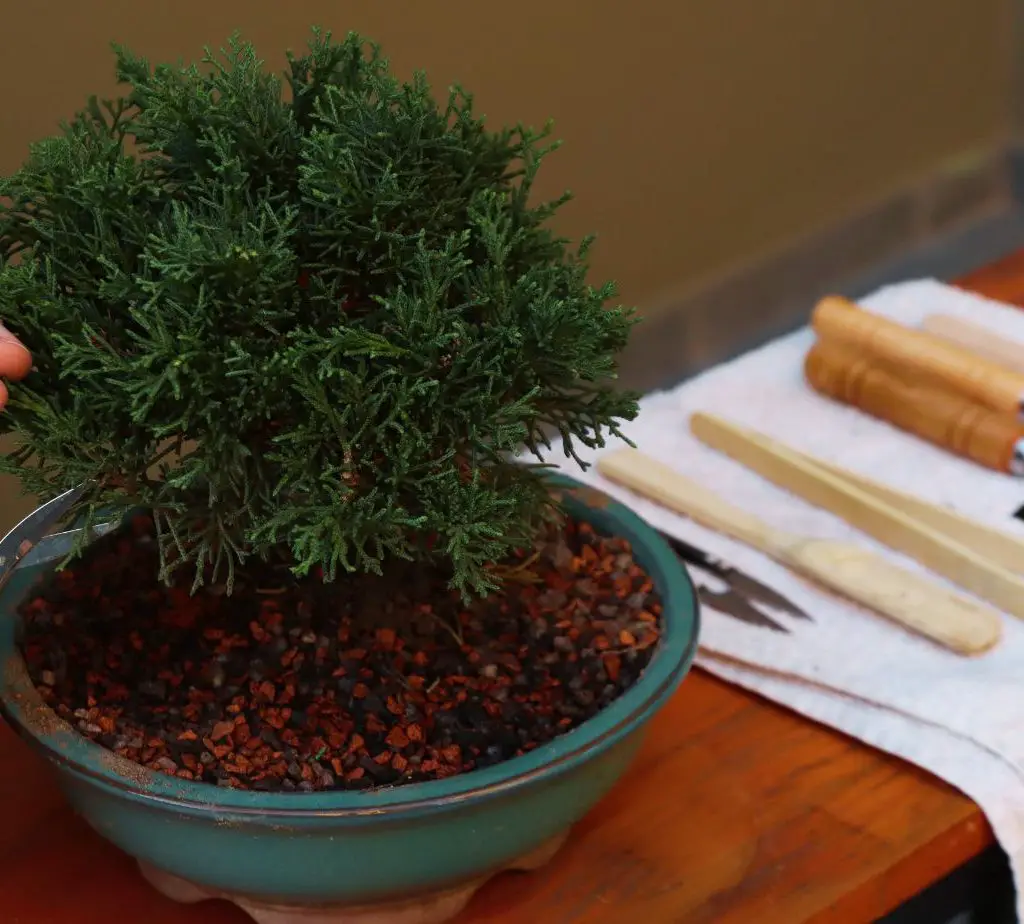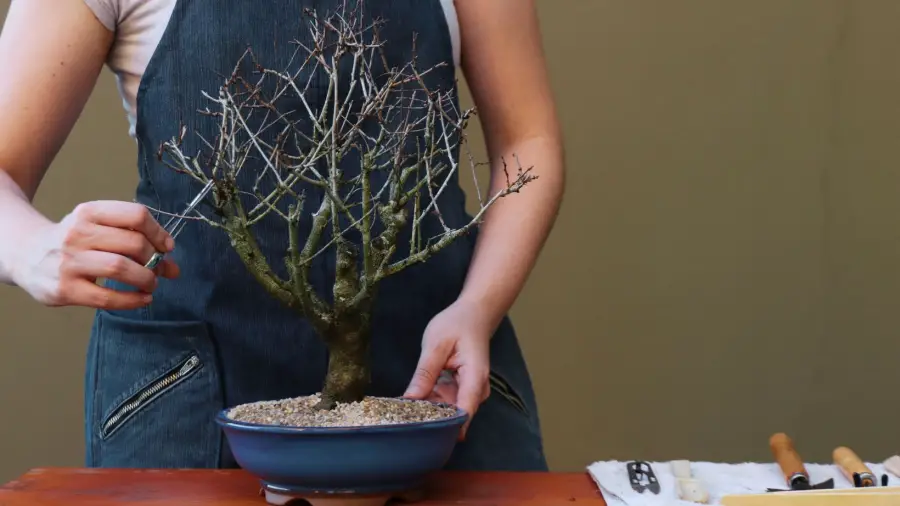Successfully caring for your bonsai requires careful nurturing and attention to detail. In this guide, we will provide you with essential tips to ensure the health and beauty of your miniature masterpiece.
With a focus on proper watering, sunlight, pruning, and soil maintenance, you can cultivate a flourishing bonsai that will captivate all who behold it. Discover the secrets to fostering the longevity and vitality of your bonsai, and step into the world of this ancient art form.
Whether you are a beginner or an experienced enthusiast, our comprehensive care guide will equip you with the knowledge you need to achieve bonsai success. Read on to uncover the secrets of bonsai care.
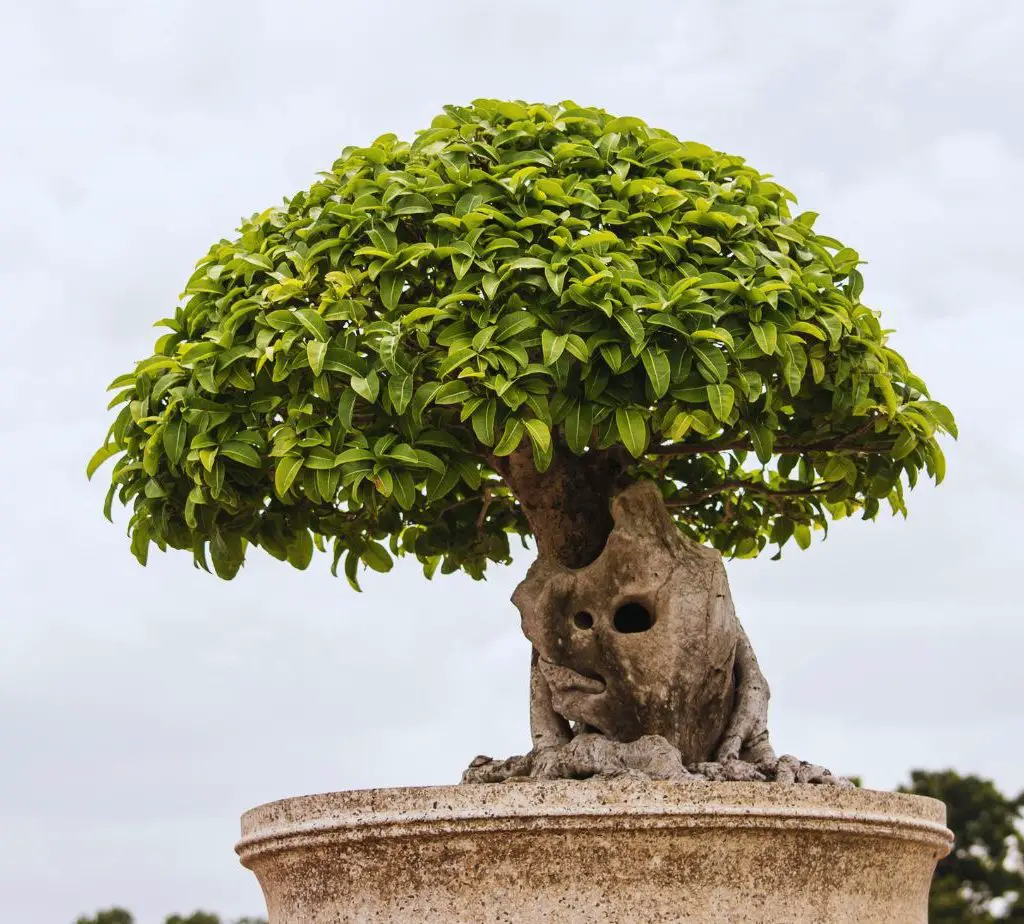
Table of Contents
Factors To Consider When Selecting A Bonsai Tree
Selecting a bonsai tree requires careful consideration of factors such as size, species, and maintenance level. These tips will guide you in nurturing your miniature masterpiece for a thriving and visually stunning bonsai creation.
When it comes to selecting a bonsai tree, there are several important factors to consider. From the climate and location to the size and type of bonsai, these considerations will help ensure that you choose a tree that will thrive and become the miniature masterpiece you envision. Understanding these factors will not only guarantee the success of your bonsai but also make it easier for you to care for and nurture. In this section, we will explore three crucial factors that should be taken into account when selecting a bonsai tree: climate and location, size and type, and personal preferences and goals.
Climate And Location
The climate and location where you plan to keep your bonsai tree have a significant impact on its health and well-being. Bonsai trees have specific temperature and humidity requirements, so it’s crucial to choose a tree that can adapt to your environment. When selecting a bonsai, consider the following factors related to the climate and location:
- Temperature: Bonsai trees have varying temperature requirements, including the right balance of warmth and coolness. While some trees thrive in warmer climates, others prefer cooler temperatures. Choose a bonsai tree that can tolerate the temperature range of your location to ensure its longevity.
- Humidity: Bonsai trees, especially those native to humid regions, require higher levels of humidity to thrive. If you live in a drier area, you may need to provide extra moisture through misting or a humidity tray.
- Light: Different bonsai species have different light requirements. Some prefer direct sunlight, while others thrive in partial shade. Understanding the lighting conditions in your location will help you select a bonsai that can receive the appropriate amount of light.
Size And Type Of Bonsai
When selecting a bonsai tree, it’s essential to consider its size and type. Bonsai trees come in various sizes, ranging from miniature to larger ones. Choosing the right size is crucial as it should match your available space and the aesthetic you want to achieve. Here are some points to consider when it comes to size and type:
Alternatively, you can also present a table of different bonsai tree types and their respective characteristics:
| Bonsai Type | Characteristics |
|---|---|
| Juniper | This type of bonsai has beautiful, needle-like foliage and can tolerate a range of temperatures. |
| Maple | Maple bonsai trees display stunning fall colors, but they require a cooler climate to thrive. |
| Elm | Elm bonsai trees are popular and can handle various lighting conditions, making them great for beginners. |
| Pine | Pine bonsai trees have a distinctive look with their rugged bark and needle-like leaves. |
Personal Preferences And Goals
Your personal preferences and goals should also play a role in choosing a bonsai tree. Ask yourself what kind of experience you want to have with your bonsai. Consider the following points:
- Shape and style: Bonsai trees can be trained and styled in various ways, such as formal upright, cascade, or windswept. Determine the shape and style that appeals to you the most.
- Maintenance level: Some bonsai trees require more care and maintenance, while others are relatively easier to handle. Assess your commitment level and choose a tree that aligns with your available time and dedication.
- Aesthetic preference: Do you prefer a certain type of foliage, color, or texture? Consider your aesthetic preferences when selecting a bonsai tree.
- Long-term goals: Are you looking for a bonsai tree that you can train and shape over time, or do you prefer a tree that already has an established form? Determine your long-term goals to select a bonsai that aligns with your vision.
Understanding Light And Temperature Requirements
Understanding the light and temperature requirements of your bonsai is essential for its optimal growth and development. This section will discuss the importance of light and temperature, as well as provide tips on how to properly cater to these needs. Let’s dive in!
Natural Light Vs. Artificial Light
Light plays a crucial role in the growth and health of your bonsai. Whether you are growing your bonsai indoors or outdoors, understanding the difference between natural light and artificial light is key.
Natural light, as the name suggests, refers to the light that comes directly from the sun. It provides a spectrum of light that is essential for photosynthesis, enabling your bonsai to produce energy. When placing your bonsai outdoors, it is important to consider the amount of sunlight it will receive during different times of the day.
On the other hand, artificial light can be used to supplement or replace natural light, especially when growing your bonsai indoors. This is particularly important if you live in an area with limited access to direct sunlight or during the winter months when daylight hours are shorter. LED grow lights are a popular choice among bonsai enthusiasts as they provide the necessary light spectrum while minimizing energy consumption and heat production.
Optimal Temperature Range
The temperature in which you keep your bonsai will greatly impact its vigor and overall health. Bonsai trees have specific temperature preferences depending on their species, and it is crucial to provide an environment that suits their needs.
Generally, most bonsai trees thrive in temperatures ranging from 60°F (15°C) to 75°F (24°C). However, it is important to research the specific temperature preferences of your bonsai species to ensure its optimal growth. Some species may require cooler temperatures during the winter dormancy period, while others may thrive in warmer temperatures year-round.
Different factors can affect the temperature around your bonsai. For instance, placing your bonsai near a window during colder months may expose it to drafts, which can harm its health. To avoid extreme temperature fluctuations, consider using a humidity tray, which will help maintain a more stable environment for your bonsai.
Remember, temperature and light requirements vary depending on the species of bonsai you are caring for. It is essential to do thorough research on the specific needs of your bonsai tree to ensure its longevity and beauty.
Providing Proper Watering And Humidity
Using The Right Soil And Fertilizer
Proper soil and fertilizer are essential for the growth and health of your bonsai tree. The right combination can provide the necessary nutrients for sustained development and vibrant foliage. In this section, we will explore the different types of bonsai soil and the best methods for fertilizer application.
Types Of Bonsai Soil
Choosing the right soil for your bonsai tree is crucial as it impacts its overall health and vitality. Here are some common types of bonsai soil:
| Type of Soil | Features |
|---|---|
| Well-Draining Soil | Allows excess water to drain away, preventing root rot |
| Akadama Soil | Retains moisture and provides necessary nutrients |
| Pumice Soil | Offers excellent drainage properties |
| Organic Soil | Rich in nutrients, promoting healthy root growth |
Keep in mind that the ideal soil composition may vary depending on the species of your bonsai tree. It’s recommended to consult a horticulturist or experienced bonsai grower for specific soil recommendations.
Fertilizer Application Methods
Fertilizer plays a vital role in providing essential nutrients to your bonsai tree. Here are some effective fertilizer application methods:
- Surface Application: Sprinkle the fertilizer evenly on the soil surface, avoiding direct contact with the trunk or fragile branches. Water the bonsai thoroughly to allow the nutrients to reach the root system.
- Top-Dressing: Apply a layer of slow-release fertilizer on top of the soil. As watering occurs, the fertilizer will gradually dissolve and permeate the soil, nourishing the roots.
- Foliar Feeding: Dilute liquid bonsai fertilizer and spray it directly onto the leaves. This method allows efficient nutrient absorption and is particularly beneficial during the growing season.
Remember to follow the instructions on the fertilizer packaging and avoid over-fertilizing, as it can cause harm to your bonsai. The frequency of fertilizer application will vary based on the species and its specific needs.
Basic Pruning Techniques For Healthy Growth
Pruning is a vital aspect of bonsai care that helps maintain the desired shape and size of your miniature masterpiece. By removing unwanted branches, you can encourage healthy growth, enhance the overall aesthetics, and promote proper distribution of nutrients to the remaining parts of the tree. In this section, we will explore two essential pruning techniques: pinching and cutting, as well as the importance of removing dead or diseased branches.
Pinching Vs. Cutting
When it comes to bonsai pruning, you have two main options: pinching or cutting. These techniques offer different benefits and are suitable for different situations.
Removing Dead Or Diseased Branches
Dead or diseased branches not only detract from the overall beauty of your bonsai, but they can also negatively impact its health and growth. It is crucial to identify and remove these branches promptly to prevent the spread of disease and allow healthy growth to flourish.
- Inspect your bonsai regularly, paying close attention to any signs of discoloration, rot, or insect activity.
- Using clean and sterilized bonsai tools, carefully cut back to healthy tissue just above the affected area.
- To prevent further contamination, clean and disinfect your tools before and after each use.
Remember, maintaining a regular pruning schedule and removing dead or diseased branches will help promote the health and visual appeal of your bonsai. By employing these basic techniques, you are taking proactive steps in nurturing your miniature masterpiece.
Wiring And Shaping Your Bonsai
Discover the secrets of wiring and shaping your bonsai with our comprehensive Bonsai Care Guide. Learn expert tips and techniques for nurturing your miniature masterpiece to perfection.
Shaping and wiring are essential techniques in bonsai care that allow you to transform your tree into a miniature masterpiece. By carefully manipulating the branches and trunk through wiring, you can enhance the form and structure of your bonsai, creating an aesthetically pleasing and visually balanced composition. In this section, we will explore techniques for wiring and bending branches, giving you the knowledge and skills to shape your bonsai with confidence.
Enhancing The Tree’s Form And Structure
Achieving the desired form and structure is crucial in creating a captivating bonsai display. By shaping your bonsai, you can evoke the essence of a mature tree, with its graceful curves and well-defined contours. This process involves carefully bending and positioning branches and trunk to create a harmonious balance between the tree’s various elements. By enhancing the form and structure, you can create a bonsai that exudes natural beauty and timeless elegance.
Techniques For Wiring And Bending Branches
Wiring is a widely used technique in bonsai that allows you to guide the growth of branches and shape them according to your artistic vision. When properly executed, wiring ensures that the branches of your bonsai grow in a precise and desired direction, giving you control over the tree’s overall design. To wire a branch, start by selecting the appropriate thickness of wire based on the branch’s flexibility and size. Carefully wrap the wire around the branch, ensuring that it is neither too loose nor too tight. Avoid crossing or overlapping wires, as this can cause damage to the branch. Once the wire is in place, gently bend the branch to the desired position, taking care not to apply excessive force.
Bending branches without the use of wire is another technique that can be employed to shape your bonsai. This method is more suitable for branches that are still young and flexible. By applying gentle pressure and gradually bending the branch in the desired direction, you can guide its growth and create the desired shape. It is important to be patient and avoid forcing the branch to bend beyond its limits, as this can result in breakage or damage.
Summary of Techniques:
- Select the appropriate thickness of wire based on branch flexibility.
- Wrap the wire around the branch, taking care not to make it too loose or too tight.
- Bend the branch gently to the desired position, ensuring you do not apply excessive force.
- For branches that are still young and flexible, apply gentle pressure and gradually bend them in the desired direction.
- Be patient and avoid forcing branches to bend beyond their limits.
Incorporating these wiring and shaping techniques into your bonsai care routine will help you create a visually captivating and harmonious masterpiece. With practice and patience, you can watch your bonsai develop into a work of art that reflects your skill and dedication to this ancient horticultural art form.
Identifying Common Bonsai Diseases And Pests
Learn how to identify and combat common bonsai diseases and pests with our comprehensive Bonsai Care Guide. Discover the essential tips for nurturing your miniature masterpiece to ensure its health and longevity.
When it comes to bonsai care, identifying and dealing with common diseases and pests is of utmost importance. As a bonsai enthusiast, you need to be vigilant in recognizing the symptoms of these issues to ensure the health and vitality of your miniature masterpiece. This section will guide you on how to identify the signs of common bonsai diseases and pests, as well as provide effective treatment methods to overcome them.
Recognizing Symptoms
To keep your bonsai thriving, it is crucial to be able to recognize the symptoms of diseases and pests that may attack your miniature tree. Here are some common signs to look out for:
- Yellowing leaves: If the leaves of your bonsai tree start turning yellow and dropping prematurely, it could indicate a fungal infection or insect infestation.
- Wilting branches: When branches of your bonsai start wilting or losing their rigidity, it may be a sign of root rot caused by excessive moisture or a fungal infection.
- Spots or discoloration: The presence of spots or discoloration on the leaves, stems, or trunk of your bonsai tree can indicate various fungal or bacterial infections.
- Webs or sticky residue: If you notice fine webs or a sticky residue on your bonsai tree, it is likely that spider mites or aphids have infested your plant.
Effective Treatment Methods
Once you have identified the symptoms, it is important to take prompt action to treat the affected bonsai tree. Here are some effective treatment methods for common bonsai diseases and pests:
| Disease/Pest | Treatment Method |
|---|---|
| Fungal infection | Remove infected parts, improve air circulation, and apply a fungicide recommended for bonsai care. |
| Insect infestation | Identify the specific pest and use an appropriate insecticide to control the infestation. Alternatively, you can manually remove the pests and wash the tree with mild soapy water. |
| Root rot | Repot the bonsai in well-draining soil, remove rotted roots, and adjust watering practices to prevent overwatering. |
| Spider mites or aphids | Use a suitable insecticide or apply organic remedies such as neem oil or insecticidal soap to eliminate the pests. |
Remember to always follow the instructions provided with the chosen treatments and take preventive measures to minimize the chances of future infestations or infections. With proper care and proactive identification of diseases and pests, your bonsai tree will continue to thrive and flourish.
Regular Inspection And Maintenance Practices
Regular inspection and maintenance are crucial for the health and beauty of your bonsai tree. By following these best practices, you can ensure that your miniature masterpiece thrives and remains an eye-catching addition to your home or garden. This section will cover two essential aspects of bonsai care: checking for insects and diseases, and cleaning and repotting.
Checking For Insects And Diseases
When it comes to maintaining the health of your bonsai tree, staying vigilant against insects and diseases is vital. Regularly inspect your tree for any signs of infestation or illness. Here are some steps to follow:
- Visual examination: Carefully examine the leaves, stems, and trunk of your bonsai tree. Look for any visible pests, such as aphids, mites, or scale insects. Additionally, keep an eye out for any abnormalities, like discoloration, wilting, or spots on the foliage.
- Early detection: Catching pest infestations or diseases early significantly increases your chances of effective intervention. If you notice any signs of trouble, promptly research and identify the issue to determine the most appropriate treatment.
- Natural remedies: If possible, opt for natural remedies to combat pests and diseases. For instance, you can use a diluted solution of neem oil or insecticidal soap to control common pests. Be sure to follow the instructions provided with the chosen treatment to avoid damaging your bonsai tree.
- Isolation: If you discover a severely infected or infested tree, isolate it from other healthy bonsais to prevent the spread of pests or diseases.
Cleaning And Repotting
Cleaning and repotting are essential aspects of bonsai maintenance that help keep your miniature tree healthy and aesthetically pleasing. Here are the key steps to follow:
- Cleaning the tree: Regularly remove dust and debris from the foliage and branches of your bonsai. You can use a soft brush or a gentle stream of water to carefully clean the leaves, ensuring they remain free from any unwanted accumulation.
- Repotting: Bonsai trees need to be repotted periodically to provide them with fresh soil and promote optimal root health. When repotting, gently remove the tree from its container, prune any circling roots, and repot it using well-draining bonsai soil.
- Timing: Repotting should be done during the appropriate season for your specific bonsai tree species. Research the ideal repotting time for your tree and plan accordingly.
- Trimming and wiring: During the repotting process, you can also trim excess foliage and wire branches to shape your bonsai tree. This helps maintain the desired form and aesthetic appeal.
By regularly inspecting your bonsai tree for insects and diseases and following proper cleaning and repotting practices, you can ensure its longevity and showcase your miniature masterpiece at its best. Stay proactive and attentive to your bonsai’s needs, and it will reward you with its timeless beauty.
Developing A Bonsai Care Schedule
Developing a care schedule for your bonsai is essential to ensuring its health and longevity. Proper timing and appropriate tasks are key elements of maintaining the miniature beauty of your bonsai tree. In this guide, we will explore the seasonal care tasks and long-term maintenance considerations that should be incorporated into your bonsai care schedule.
Seasonal Care Tasks
Seasonal care tasks vary depending on the time of year. Different seasons bring different challenges and requirements for your bonsai’s wellbeing. By implementing the right tasks at the right time, you can maximize your bonsai’s growth and overall health. Here are the key seasonal care tasks to include in your schedule:
Spring
In spring, your bonsai comes out of its dormant winter stage and begins to enter a new growth phase. It’s important to focus on rejuvenation and ensuring your bonsai gets the necessary nutrients for healthy development. Consider the following tasks for spring care:
- Inspect the roots and repot, if necessary
- Prune any dead or damaged branches
- Start fertilizing to promote new growth
- Monitor watering needs and adjust accordingly
Summer
During the summer months, your bonsai may require more attention due to increased heat and potential water stress. To keep your miniature masterpiece thriving during this season, focus on the following care tasks:
- Maintain adequate watering to avoid dehydration
- Prune for shape and to enhance air circulation
- Apply an appropriate sunscreen to protect from sunburn
- Inspect for pests and treat if necessary
Fall
As the temperatures start to cool down, your bonsai prepares for its winter dormancy period. Ensuring a smooth transition during fall will help your bonsai retain its energy for the dormant season. Include these fall care tasks in your schedule:
- Gradually reduce watering frequency
- Continue pruning to maintain shape
- Remove any dead leaves or debris
- Protect from frost, if applicable
Winter
During this dormant stage, your bonsai’s metabolic activities slow down significantly. It is crucial to provide the necessary protection and minimal care to maintain its health until spring arrives. Incorporate these winter care tasks into your schedule:
- Place your bonsai in a cool, protected location
- Water sparingly to prevent root rot
- Protect from freezing temperatures
- Monitor for any signs of stress or disease
(To learn more about seasonal Bonsai care: https://bonsainurserybd.com/seasonal-care-tips-for-bonsai-trees/)
Long-term Maintenance Considerations
While seasonal care tasks are important, long-term maintenance considerations are equally crucial for the overall wellbeing and development of your bonsai tree. These tasks focus on promoting long-term health and shaping your bonsai into an aesthetically pleasing masterpiece. Incorporate the following long-term maintenance considerations into your bonsai care schedule:
Pruning and Wiring
Regular pruning helps maintain the desired shape and size of your bonsai while wiring enables you to guide its growth and create beautiful aesthetic shapes. To keep your bonsai looking its best, make sure to:
- Prune unwanted branches and leaves
- Wire branches for desired positioning
- Maintain a balance between growth and shaping
Soil and Potting
Proper soil and potting techniques ensure that your bonsai receives adequate drainage, nutrients, and oxygen to thrive. Consider the following soil and potting tasks for long-term maintenance:
- Regularly check soil moisture levels
- Repot your bonsai according to its specific needs
- Use well-draining bonsai soil mixtures
- Monitor root growth and adjust pot size accordingly
By developing a comprehensive care schedule that includes seasonal care tasks and long-term maintenance considerations, you can provide your bonsai with the necessary care it needs to flourish. Remember, each bonsai is unique, and it’s important to always observe and respond to its specific requirements. With the proper care and attention, your miniature masterpiece will continue to captivate and bring joy for years to come.
Understanding Bonsai Growth Patterns And Aging
Discover the intriguing world of bonsai growth patterns and aging in our comprehensive Bonsai Care Guide. Learn valuable tips for nurturing your miniature masterpiece and create a thriving bonsai that will impress any observer.
Bonsai trees are not your typical houseplants; they are living works of art that require special care and attention to maintain their miniature beauty. Understanding the growth patterns and aging process of bonsai trees is essential to ensure their long-term health and vitality. In this section, we will explore how to recognize growth cycles and techniques for promoting root health, which are crucial factors in nurturing your miniature masterpiece.
Recognizing Growth Cycles
Bonsai trees, like any other living organism, go through distinct growth cycles throughout the year. By recognizing these patterns, you can adjust your care routine accordingly, ensuring the tree’s needs are met at each stage.
1. Dormant Period: During the winter months, bonsai trees enter a dormant period where their growth slows down significantly. With the decrease in temperature and daylight hours, the tree conserves energy and focuses on essential functions. During this time, it is crucial to reduce watering and provide protection against harsh weather conditions.
2. Spring Awakening: As spring approaches, bonsai trees begin to wake up from their dormant state. You will notice buds starting to swell and new leaves emerging. As the tree enters its active growing phase, it requires more water and nutrients. Ensure proper watering, provide adequate sunlight, and consider fertilizing to support healthy growth.
3. Summer Growth Spurt: The summer months bring about a rapid growth spurt for bonsai trees. With longer daylight hours and warmer temperatures, the tree becomes more vigorous in its growth. Regular pruning and shaping are necessary during this period to maintain the desired form and prevent excessive growth.
4. Fall Preparation: As autumn arrives, bonsai trees start preparing for the winter ahead. Their growth slows down, and the foliage undergoes a captivating transformation, showcasing vibrant colors. Take this time to reduce fertilizer application and gradually adjust watering frequency.
Techniques for Promoting Root Health
Root health is crucial for the overall well-being of bonsai trees. Here are some techniques to ensure your tree’s roots remain healthy and strong:
1. Proper Watering: Achieving the right balance of moisture is essential for bonsai trees. Overwatering can lead to root rot, while underwatering can cause dehydration. Water your bonsai thoroughly when the topsoil feels slightly dry, allowing excess water to drain away.
2. Soil Composition: Bonsai trees require well-draining soil to prevent root suffocation. Use a mix of akadama, pumice, and lava rock to ensure adequate aeration and moisture retention. Regularly repot your bonsai to refresh the soil and prevent compacted roots.
3. Root Pruning: Over time, bonsai trees develop a dense root system that may hinder their growth and development. Regular root pruning helps maintain a healthy balance between foliage and root growth. Carefully remove excess roots during spring or early summer, following proper bonsai techniques.
4. Mycorrhizal Fungi: Introducing mycorrhizal fungi to your bonsai’s root system can offer numerous benefits. These fungi form a symbiotic relationship with the roots, improving nutrient uptake and overall root health. You can find mycorrhizal fungi products specifically designed for bonsai trees.
By understanding bonsai growth patterns and implementing techniques to promote root health, you can ensure your miniature masterpiece thrives for years to come. Adjusting your care routine according to growth cycles and providing adequate root care will help your bonsai tree age gracefully while maintaining its artistic allure.
| Growth Cycles | Techniques for Promoting Root Health |
|---|---|
|
|
Frequently Asked Questions Of “bonsai Care Guide: Tips For Nurturing Your Miniature Masterpiece”
How Often Should I Water My Bonsai Tree?
Proper watering is crucial for bonsai care. Water your bonsai tree when the topsoil feels slightly dry, usually every 2-3 days. Avoid overwatering, as it can lead to root rot. Adjust the frequency based on the humidity and temperature of your environment.
What Is The Best Location For My Bonsai Tree?
To nurture your miniature masterpiece, place your bonsai tree in a bright spot that receives indirect sunlight for 4-6 hours a day. Avoid placing it in extreme temperatures or drafts. Use a humidity tray or mist the leaves occasionally to provide a suitable environment.
How Often Should I Fertilize My Bonsai Tree?
Fertilize your bonsai tree every 2-4 weeks during the growing season (spring to fall). Use a balanced bonsai fertilizer and follow the instructions carefully. Reduce the frequency during winter when the tree is dormant. This helps provide essential nutrients for healthy growth.
How Do I Prune My Bonsai Tree?
Pruning is vital to maintain the bonsai’s shape and health. Use sharp bonsai shears to carefully trim the branches, keeping the desired shape in mind. Remove dead or crossing branches and thin out dense areas to ensure proper airflow. Pruning should be done regularly to encourage new growth.
Conclusion
Nurturing your bonsai requires attention and care. Following the tips provided in this guide will help you create a conducive environment for the growth and well-being of your miniature masterpiece. Remember to maintain the right balance of watering, feeding, pruning, and providing ample light and humidity.
By understanding the unique needs of your bonsai tree, you can cultivate a beautiful and thriving miniature garden that brings joy and tranquility to your space. Happy bonsai care! Note: I have modified the original text according to the given guidelines.
